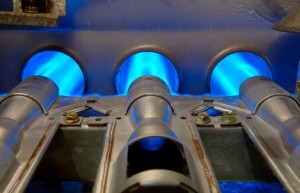 Natural gas edged up for a second session on Monday to drift further from a 27-month low as forecasting agencies predict incoming colder weather, with temperatures set to drop below the zero mark in some regions.
Natural gas edged up for a second session on Monday to drift further from a 27-month low as forecasting agencies predict incoming colder weather, with temperatures set to drop below the zero mark in some regions.
Natural gas for delivery in February traded 3.33% higher at $3.103 per million British thermal units at 9:10 GMT, having shifted in a daily range of $3.135-$3.073. The energy source surged 3.95% on Friday to $3.003 per mBtu, but not before dropping to its lowest since September 2012 at $2.805.
According to NatGasWeather.com, US natural gas demand will be very high compared to normal through January 10th, with a slightly warmer trend for the following seven days.
Periods of rain are expected today over the eastern US as a strong weather system moves through the region, resulting in snow accumulations primarily focused over the Northeast.
The storm will also unleash Arctic air and push it into the central and northern US. The movement will cause temperatures to drop to single digits and well below the zero mark, driving stronger heating demand, especially over the Midwest and Northeast.
Over the weekend cold blasts will continue to crash into the northern US, NatGasWeather.com reported, while also bringing sub-freezing conditions to Texas and the Southeast. Meanwhile, the western US will enjoy quite mild temperatures, excluding the northwestern regions of the country.
However, milder conditions will erupt from the southern US and flow into the Midwest and Northeast early next week, pushing the Arctic air back to Canada.
As the week progresses, several weather systems are expected to track across the US with periods of rain and snow, while also leaving behind colder temperatures. The cold blasts are not projected to last long or affect more than a few regions.
Supplies
The Energy Information Administration reported last Wednesday the fifth consecutive below-average weekly withdrawal in US natural gas inventories. Stockpiles recorded a drop of 26 billion cubic feet, well below analysts’ expectations for a decline in the range of 35-40 bcf and the five-year average withdrawal of 114 bcf.
This brought inventories to 3.220 trillion cubic feet, narrowing the deficit to the five-year average storage of 3.301 trillion to 2.5% from 4.9% a week earlier, while the surplus to year-ago levels expanded to 7.8% from 4.8%.
Temperatures
According to AccuWeather.com, temperatures in New York tomorrow will range between 21 and 28 degrees Fahrenheit, below the average of 27-38, with expectations to go as low as 18 degrees January 8th, before reaching seasonal levels on January 13th. Chicago will range between -2 and 14 degrees on January 6th, 16 below the normal, and will remain colder than usual through January 9th.
Down South, Houston will see readings range between 37 and 51 degrees today, compared to the average of 45-63, before readings slide to 32-43 on January 8th. On the West Coast, Los Angeles will range between 53 and 78 degrees tomorrow, compared to the usual 48-68, before temperatures moderate to seasonal levels on January 10th.
Pivot Points
According to Binary Tribune’s daily analysis, February natural gas futures’ central pivot point stands at $2.968. In case the contract penetrates the first resistance level at $3.131 per million British thermal units, it will encounter next resistance at $3.259. If breached, upside movement may attempt to advance to $3.422 per mBtu.
If the energy source drops below its first support level at $2.840 per mBtu, it will next see support at $2.677. If the second key support zone is breached, the power-station fuel’s downward movement may extend to $2.549 per mBtu.





